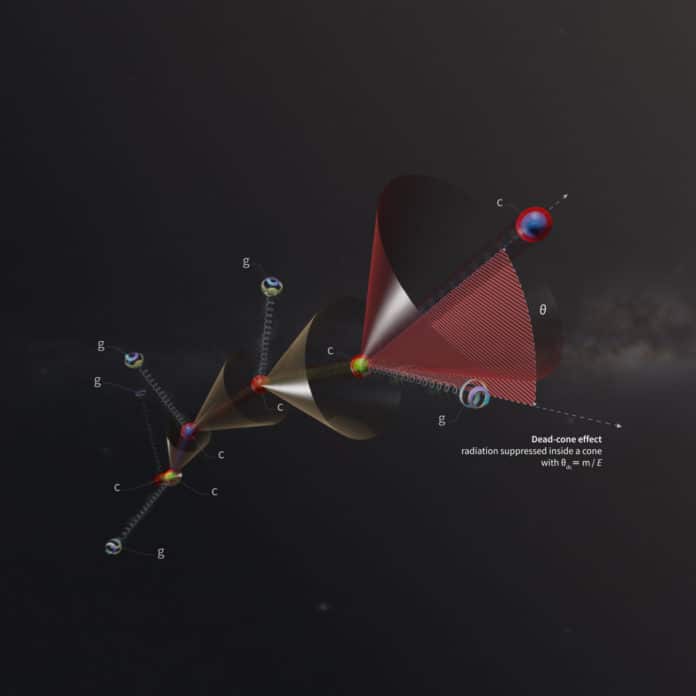After their creation, partons (quarks and gluons) undergo a cascade of events called a parton shower. They lose energy by emitting radiation in the form of gluons, which also emit gluons. This shower’s radiation pattern relies on the gluon-emitting Parton’s mass. It displays a zone around the direction of flight of the Parton where gluon emission is suppressed – the dead cone.
The deadly cone effect is a fundamental feature of the theory of the vital force that binds quarks and gluons together into protons, neutrons, and, ultimately, all atomic nuclei. The ALICE collaboration at the Large Hadron Collider (LHC) has made the first direct observation of the dead-cone effect. The study offers direct experimental access to the mass of a single charm quark before it is confined inside hadrons.
ALICE spokesperson Luciano Musa said, “It has been very challenging to observe the dead cone directly. But, we have finally been able to uncover it by using three years’ worth of data from proton-proton collisions at the LHC and sophisticated data-analysis techniques.”
The ALICE collaboration used state-of-the-art analysis techniques for a large sample of proton-proton collisions at the LHC. The parton shower can be rolled back in time using these techniques: the signals left in the ALICE detector by a stream of particles. The scientists detected a jet formed by this type of quark and traced back the quark’s history of gluon emissions by looking for jets that included a particle containing a charm quark. When the charm quark’s gluon-emission pattern was compared to that of gluons and virtually massless quarks, a dead cone was discovered in the charm quark’s pattern.
The result also directly exposes the mass of the charm quark, as theory predicts that massless particles do not have corresponding dead cones.
ALICE physics coordinator Andrea Dainese said, “Quark masses are fundamental quantities in particle physics, but they cannot be accessed and measured directly in experiments because, except for the top quark, quarks are confined inside composite particles. Our successful technique to directly observe a parton shower’s dead cone may offer a way to measure quark masses.”
Journal Reference:
- ALICE Collaboration. Direct observation of the dead-cone effect in quantum chromodynamics. Nature 605, 440–446 (2022). DOI: 10.1038/s41586-022-04572-w
